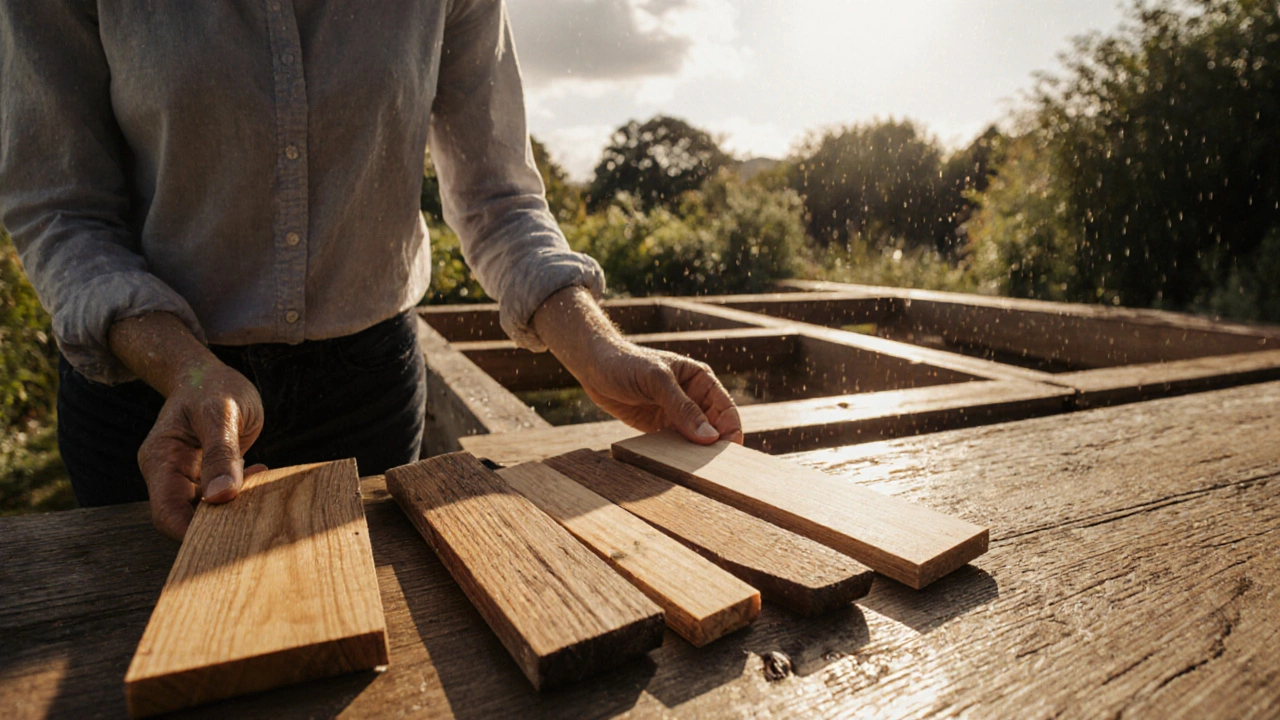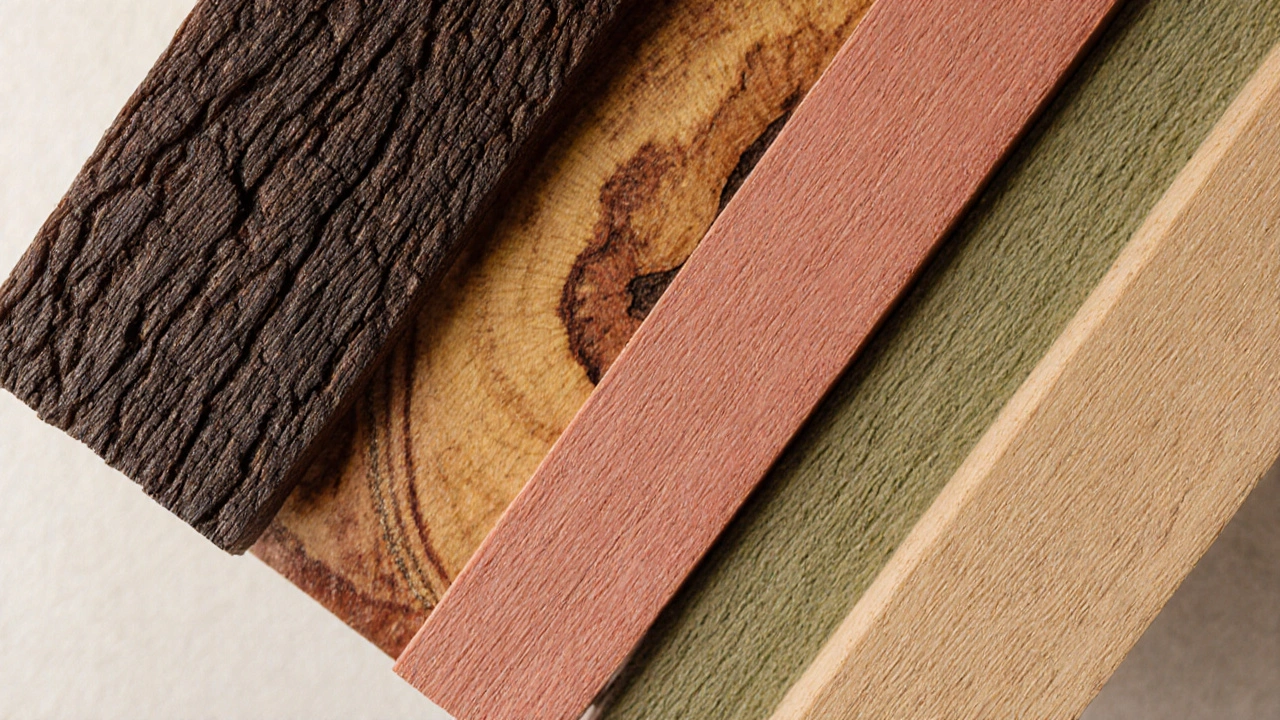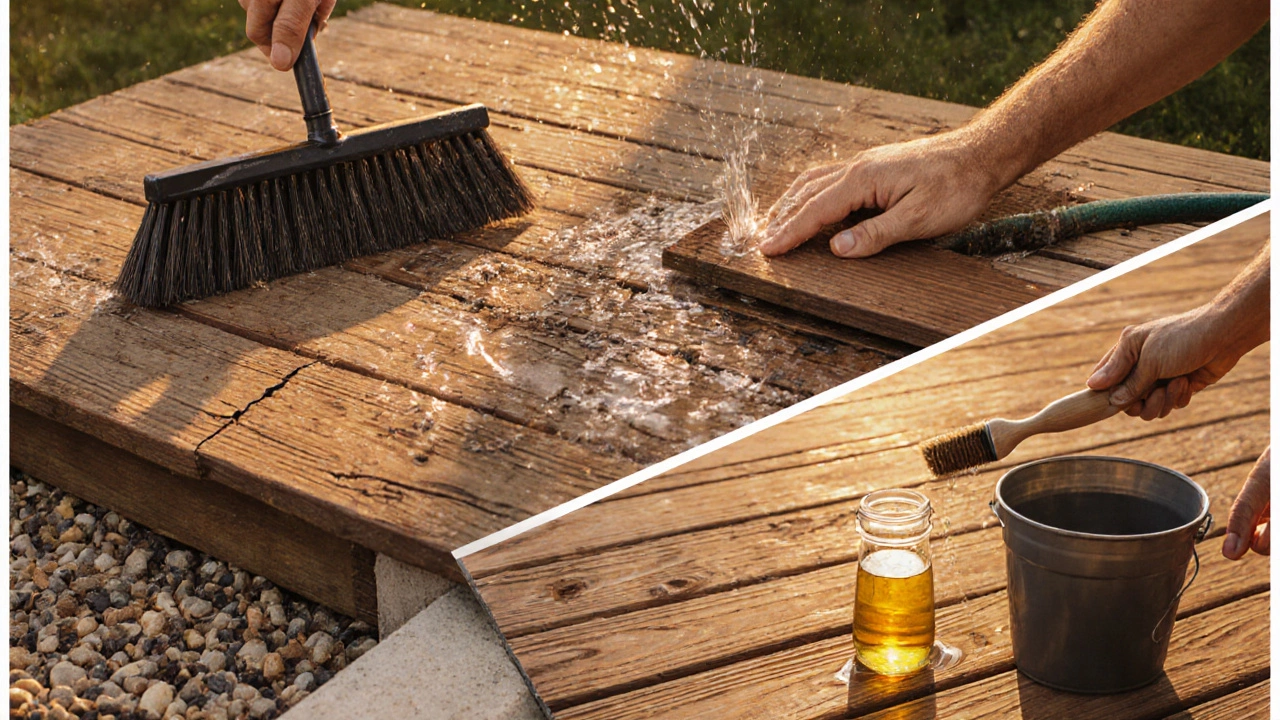
Density: 650 kg/m³
Natural Resistance: Very High (oils)
Lifespan: 50+ years
Cost Range: $15-$20 / board ft
Annual Cost: $0.30/year
Recommended For: Luxury decks
Total Project Cost: $1,500
Estimated Annual Maintenance: $100
Cost Per Year of Service: $0.30/year
Break-even Point: 50 years
Consider both initial cost and long-term maintenance when choosing outdoor wood. Premium woods like teak and ipe last longer but cost more initially. Budget-friendly options like pressure-treated pine are economical but require more frequent maintenance.
For high-traffic areas, choose harder woods. For decorative projects, consider the natural beauty and ease of maintenance.
When you plan a deck, garden bench, or pergola, the biggest worry is how long the wood will survive rain, sun, and insects. Not all timber is created equal - some species naturally fend off decay, while others need heavy treatment. This guide breaks down the top woods that keep their shape and beauty outside, explains why they perform so well, and shows how to maintain them for decades.
Wood durability is a combination of density, natural oils, and cellular structure that resists moisture and fungal attack. A dense grain leaves less space for water to travel, while oils act like a built‑in sealant. Climate matters too - humid regions accelerate rot, and UV rays break down surface fibers. Understanding these factors helps you pick a wood that matches your local weather.
While treatment (pressure‑treated, oil‑based finishes) can boost any timber, starting with a naturally resilient wood saves time and money.
The following list ranks species by their innate resistance to rot and insects, typical lifespan, and cost. Each entry includes key attributes so you can compare them side by side.
Teak is a tropical hardwood native to Southeast Asia. It contains high natural oil content, a tight grain, and a density of about 650kg/m³. Typical lifespan exceeds 50years when left untreated, and it weathers to a silver‑gray patina if you prefer that look. Cost runs around $15‑$20 per board foot, making it a premium choice for luxury decks. Ipe (Brazilian Walnut) hails from South America. Ipe’s density tops 1,000kg/m³, giving it a hardness comparable to steel. Its natural tannins repel fungi, delivering a lifespan of 40‑60years. Price averages $12‑$18 per board foot, and it’s a favorite for high‑traffic outdoor flooring. Redwood grows along the Pacific coast of the United States. With a moderate density of 450kg/m³ and natural tannins, redwood resists decay for 30‑40years when sealed. It’s lighter in color and easier to work with than teak or ipe, costing $8‑$12 per board foot. Cedar (Western Red) is a staple in North American outdoor projects. Its aroma comes from natural oils that deter beetles, and its density sits around 380kg/m³. Expect 20‑30years of service if you apply a high‑quality finish. Cedar remains affordable at $5‑$8 per board foot. White Oak thrives in temperate forests. Its closed‑cell structure and density of roughly 720kg/m³ give it excellent water resistance. Unfinished white oak can last 25‑35years outdoors, with a price tag of $9‑$13 per board foot. Pressure‑treated Pine is a softwood infused with chemicals to resist rot. Density is about 500kg/m³, and modern alkaline copper quat (ACQ) treatment extends lifespan to 20‑30years. It’s the most budget‑friendly option at $3‑$5 per board foot, but the chemicals can affect some fasteners. Cypress grows in wetland areas of the southern United States. Its natural cypressene oil gives it a decay resistance similar to cedar, with a density near 470kg/m³. Expect 25‑35years, and costs sit at $6‑$9 per board foot. Douglas Fir is a common North American softwood. While not as rot‑resistant as cedar, its density of 530kg/m³ and moderate natural durability can reach 15‑20years when sealed. It’s widely available for $4‑$6 per board foot, making it suitable for indoor‑outdoor furniture with regular upkeep.
| Wood | Density (kg/m³) | Natural Rot Resistance | Typical Lifespan (years) | Approx. Cost (USD/board ft) |
|---|---|---|---|---|
| Teak | 650 | Very High (oils) | 50+ | $15‑$20 |
| Ipe | 1000 | Very High (tannins) | 40‑60 | $12‑$18 |
| Redwood | 450 | High (tannins) | 30‑40 | $8‑$12 |
| Cedar | 380 | High (oils) | 20‑30 | $5‑$8 |
| White Oak | 720 | High (closed cells) | 25‑35 | $9‑$13 |
| Pressure‑treated Pine | 500 | Moderate (chemical) | 20‑30 | $3‑$5 |
| Cypress | 470 | High (cypressene) | 25‑35 | $6‑$9 |
| Douglas Fir | 530 | Moderate (seal required) | 15‑20 | $4‑$6 |
Even the toughest timber benefits from a simple maintenance routine. Follow these steps to keep your deck or garden structure looking fresh for decades.
Skipping any of these steps shortens lifespan, especially in damp climates like the UK’s western coast.

Budget constraints often dictate the wood you choose. Here’s a quick rule of thumb: calculate the cost per year of service. For example, a $15/ft board of teak lasting 50years works out to $0.30 per year, while a $3/ft pressure‑treated pine at 25years costs $0.12 per year. The cheaper wood wins on immediate spend, but the high‑end species may still be worth it for premium projects where aesthetics and minimal upkeep matter.
Another consideration is installation cost. Heavy woods like ipe require stronger joists and pre‑drilled fasteners, adding labor expenses. Light woods (cedar, pine) are easier for DIYers.
Match the wood’s strengths to the job at hand. Use the quick decision guide below:
Remember to factor in local supplier availability; shipping exotic woods can add 30‑40% to the price.
Teak and Ipe are the two species that naturally endure the harshest weather for 40‑60 years, even if you skip regular oiling or sealing.
Yes, modern ACQ‑treated pine is non‑toxic for most residential uses. Just avoid direct contact with food surfaces unless you finish it with a non‑chemical seal.
For teak or cedar, a light oil coat every 12‑18 months keeps the wood supple. Polymer sealants on dense woods like ipe need a fresh coat roughly every 2‑3 years.
Mixing is possible but not ideal. Different expansion rates cause gaps or warping. If you do mix, use a uniform finish across all boards to balance moisture absorption.
Start with pressure‑treated pine for the substructure, then top it with a thin layer of reclaimed cedar. The cheap base saves money, while the cedar surface adds natural rot resistance.
Choosing the right wood for outdoor projects is a balance of durability, cost, and appearance. By focusing on species with innate resistance-like teak, ipe, or cedar-and following a simple maintenance routine, you can enjoy a garden bench or deck that stays solid and beautiful for decades.
Write a comment